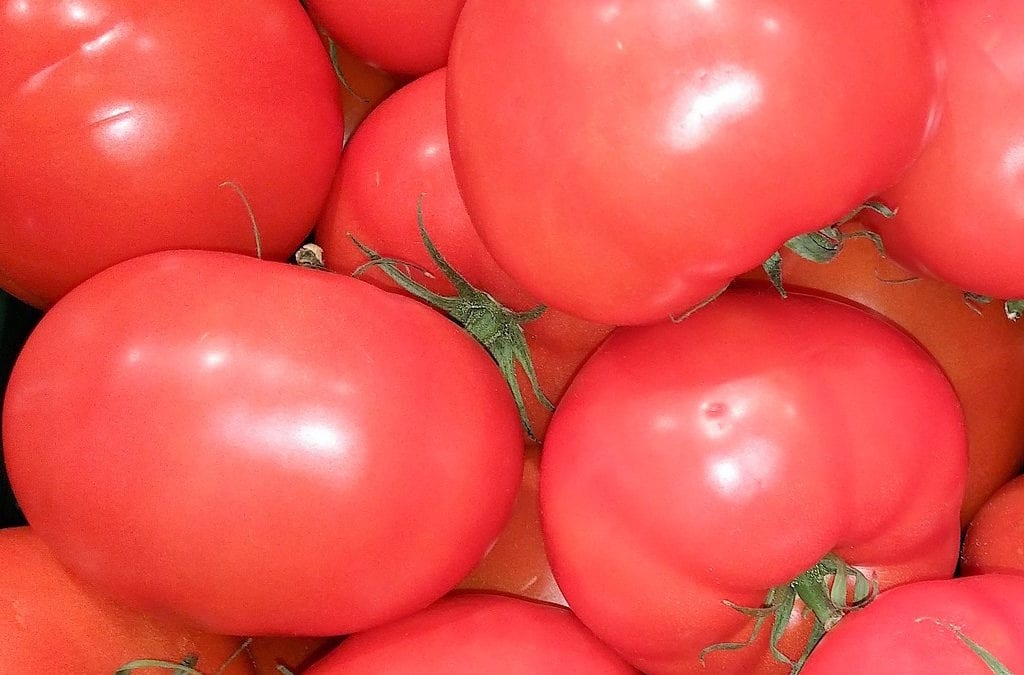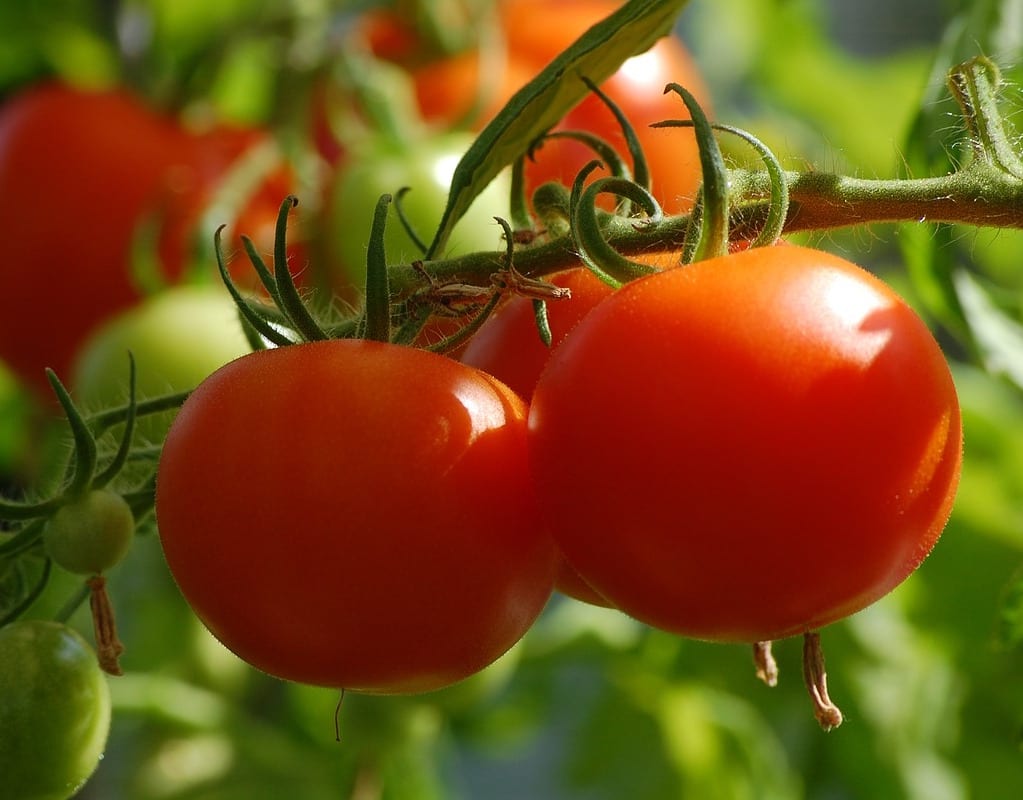Top 3 Disease Issues for Tomatoes in San Antonio
Tomato disease can plague our vegetable gardens and turn our hard work into a shriveled or mushy mess. Today’s blog is about three diseases that we commonly encounter here in San Antonio, and how to avoid and treat them.
- Fusarium Wilt – This is a soil-borne disease that enters through the roots of young tomato plants and creates a blockage within the cells of the plant. The blockage prevents the plant from taking up nutrients and water through its roots. The plant wilts, doesn’t recover, then yellows and becomes stunted. Avoid getting it by rotating crops (not planting the same crop in the same spot each year), and making sure if you are reusing pots that they are disinfected (use a 90% water to 10% bleach solution) and that old potting soil is replaced with fresh. But the best way to prevent this disease is to plant tomatoes that are coded with VFN after their names for their resistance to this and other diseases.
- Blight – Blights are fungal diseases on tomatoes that show up around the middle of May. Blight produces yellow spots on the leaves of your tomato plant; starting with the lower leaves first. It will eventually spread to the entire plant and ruin your tomatoes. Avoid it by keeping water off of the leaves when you water, focusing on the root area instead. Treat it with a copper or sulfur fungicide at the earliest detection
- Blossom End Rot – While Blossom End Rot is a physiological disorder and not a disease, we are still including it in this troubleshooting blog. Blossom end rot produces dark-brown to black spots on the bottom of tomato fruits. Spots may eventually sink in. This can be caused by a couple of things: Your tomatoes may not be getting enough calcium or you may be letting your tomatoes dry out too much in between watering. Avoid Blossom End Rot by adding a handful of soft rock phosphate at the time of planting for calcium needs or adding gypsum to your soil if it lacks calcium. There are also foliar spray products, like Fertilome Yield Booster, that can add calcium to your plants after you have the problem. Be sure to keep on top of your watering schedule, or water more consistently if you haven’t been.
(For beautiful disease-free tomato plants, try some of these preventative measures.)
Helpful Ways to Avoid Disease on Tomato Plants
- Mulch – Mulch your plants to avoid water splashing soil-borne diseases up onto the leaves of your plant.
- Drip Irrigaton – Use drip irrigation when you can. Keeping water off the foliage helps reduce disease issues.
- Air Circulation – Space plants with plenty of room between them to increase and improve air circulation. This allows air to move freely and helps prevent disease.
- Rotate Crops – Don’t plant the same crop in the same place in the garden year after year to reduce disease issues. Tomatoes really shouldn’t be planted in the same place within 3 years!
Look for these Disease Resistance Codes next to tomato names:
V Verticillium Wilt
F Fusarium Wilt
FF Fusarium, races 1 and 2
FFF Fusarium, races 1, 2, and 3
N Nematodes
A Alternaria
T Tobacco Mosaic Virus
St Stemphylium (Gray Leaf Spot)
TSWV Tomato Spotted Wilt Virus
If you have questions concerning a problem with your tomato plants, bring in a sample of the affected area (in a clear ziploc), and Rainbow Gardens will help you figure it out.
Pests bothering your tomatoes? Be sure to check out our Happy Gardener about the top tomato pests and how to deal with them.
~ The Happy Gardener



Trackbacks/Pingbacks